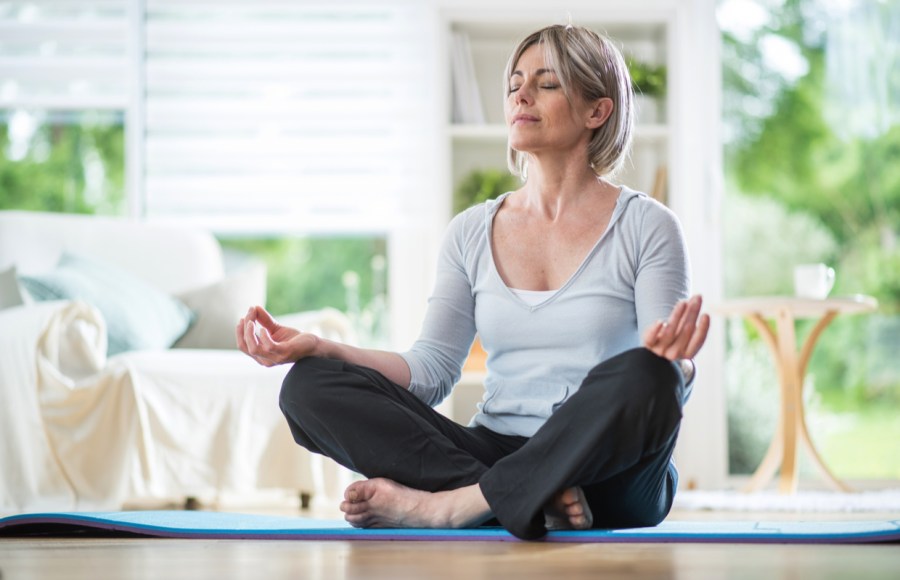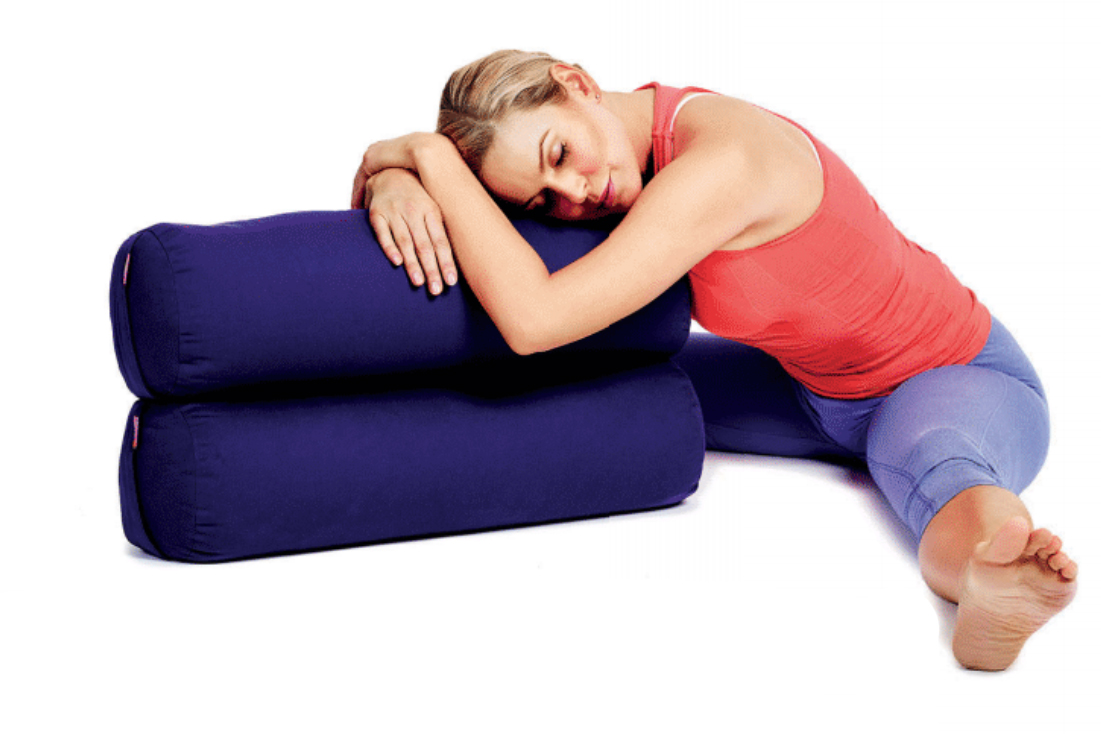Struggling with the symptoms of perimenopause? Try these yoga poses and exercises to alleviate perimenopause symptoms and navigate this transitional time in your life with a sense of peace and calm…
By Eve Boggenpoel
As women, we menstruate for around 40 years of our lives and, regardless of the relationship we have to our periods, when we enter the perimenopause, it can feel as if we are losing a part of our identity.
Indeed, I was so unprepared for these changes, when I missed a perimenopausal period I assumed I must be pregnant! There’s a lot going on hormonally during perimenopause, but the main physiological trigger is your ovaries producing fewer eggs.
This means your progesterone levels decline, resulting in fewer periods, irritability, mood changes – think low mood and anxiety– lack of concentration, fatigue, migraines and insomnia.
But a regular yoga practice can significantly help alleviate many of the common symptoms you’ll experience around this time of transition.
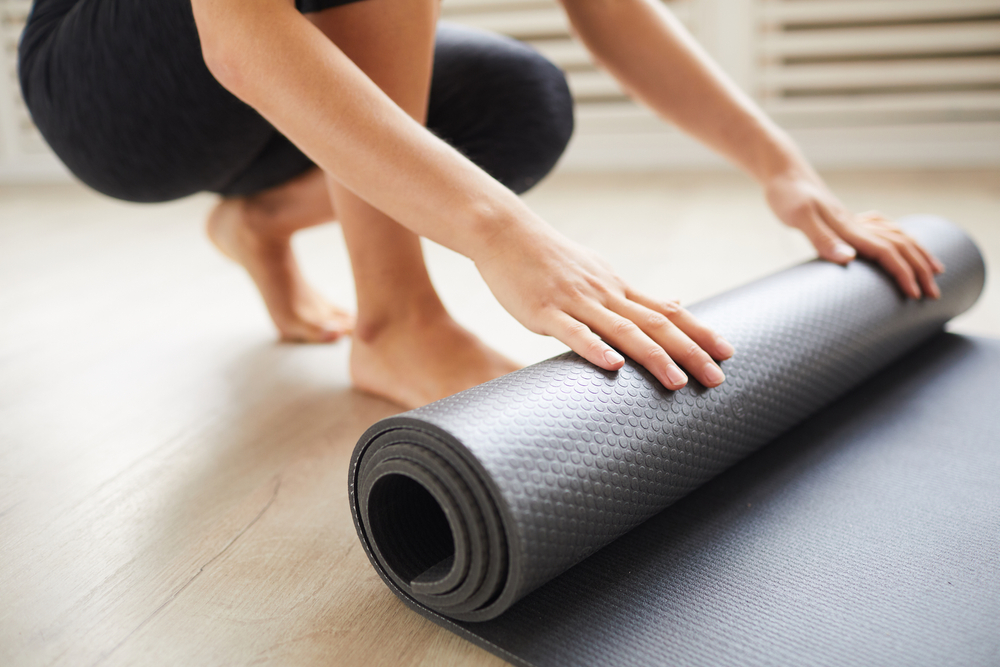
How does yoga help with perimenopause?
‘Yoga has been shown to reduce cortisol levels and reduce feelings of anxiety and depression, ’says Gabriella Espinosa, founder of Women’s Body Wisdom and yoga teacher at Movement for Modern Life (MFML). ‘It can increase the quality and duration of sleep and even increase the secretion of melatonin.
Furthermore, studies have shown significant improvements in migraine symptoms, and just 20 minutes of yoga relieve brain fog and help you process information better.’
What sort of yoga practice should I do during perimenopause?
Of course, with all the changes going on, you’re not always going to want a vigorous practice. Espinosa believes the nervous system is the most impacted during perimenopause, so you may prefer to focus on slower, more calming forms of yoga, such as floor-based yin yoga.
‘I often recommend a gentle hatha class or restorative yoga, which is all about slowing down, opening your body with passive stretches, and practising stillness,’ says Espinosa. Yoga nidra can also be really helpful, especially if you have insomnia.
‘It’s a simple but very profound practice that unwinds your nervous system and allows you to completely relax your physical self and your mind state by bringing inner awareness.’
Read on for a selection of poses to support the perimenopause from Espinosa’s MFML class, A Cooling and Calming Practice…
Best yoga poses and exercises for perimenopause
SUPPORTED SEATED FORWARD BEND
Good for: Anxiety and mood swings
How it helps: Forward bends massage the abdominal organs, activating the vagus nerve, which is responsible for switching on your parasympathetic rest and restore mode.
How to do it:
- Sit on the floor with legs wide apart.
- With your hands beside your hips, root through your palms and sitting bones to lengthen your spine, floating your crown up to the sky.
- Place your hands on the floor in front of you.
- On an inhale, lengthen your front body then, exhale and walk your hands forwards as you fold forwards from the hips.
- Rest one side of your head on two bolsters.
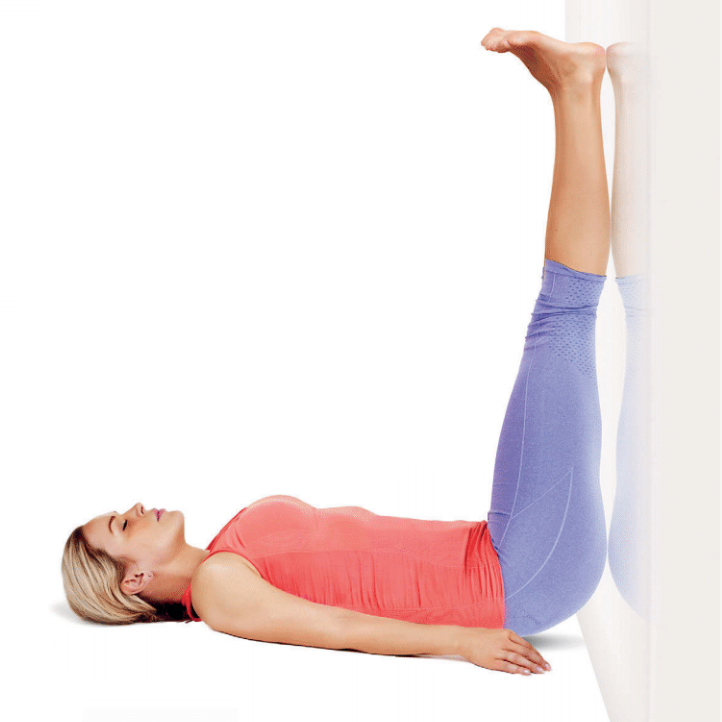
LEGS UP THE WALL
Good for: Migraine relief
How it helps: Increases energy and promotes healthy blood and lymph flow
How to do it:
- Sit sideways against the wall, knees bent, feet on the floor.
- Roll onto your back then simultaneously rotate your torso as you take your legs against the wall.
- Adjust your position so your hips are close to the wall, and release your arms to the sides, palms down.
- Allow your breath to lengthen and your muscles to release.
- Reverse the movement to come down.
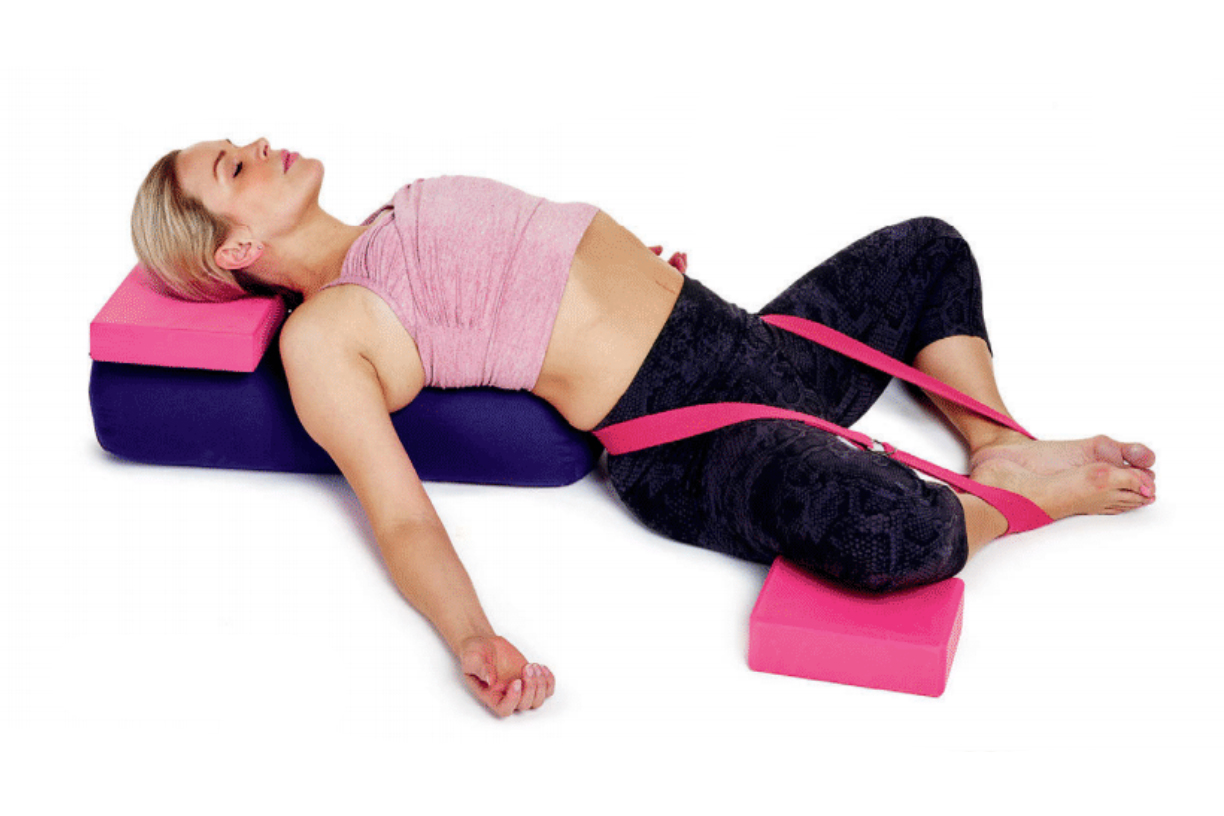
SUPPORTED BUTTERFLY POSE
Good for: Pelvic congestion and fatigue
How it helps: Improves blood flow to the pelvic area, helping to ease irregular periods
How to do it:
- Place a bolster or pillow down the centre of your mat, sitting close to the short edge, soles of feet together and knees wide. You can place a strap around the back of the body, below the waist and above the knees, if this is helpful.
- Rest a block beneath each knee and lower your spine onto the bolster, resting your head on a block or blanket.
- Release your arms to the sides, palms upwards.
- Gently close your eyes, connect to your breath and surrender your weight to the earth.
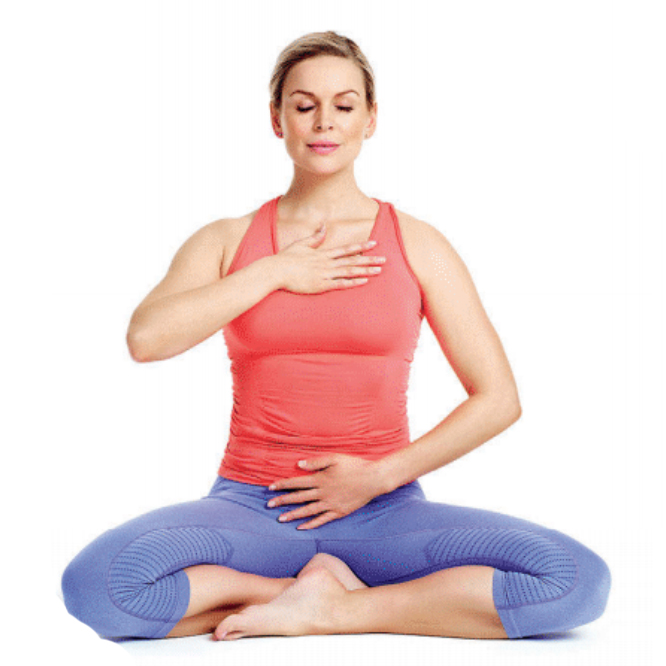
BREATH PRACTICE
Good for: Insomnia and self-acceptance
How it helps: Encourages you to listen to, reconnect with and befriend your whole body
How to do it:
- Sit comfortably with one hand on your heart the other on your belly.
- Bring your awareness to your body and a sense of compassion for yourself. Rest here a few moments, allowing your breath to settle.
- When you are ready, gradually lengthen your out-breath, until you are breathing in a pattern of inhaling to a count of four, exhaling for eight.
READER OFFER! We’ve teamed up with Movement for Modern Life to offer WF readers three months’ free access to the yoga streaming site. Your membership will also include free access to the Menopause for Modern Life course. Click here to sign up and redeem this offer!
Click here to discover the best yoga poses and exercises for better sleep!

